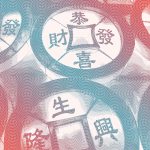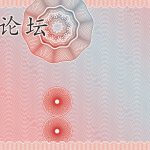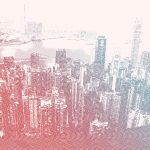Yearbook 2017: Prosperity - The China Story (original) (raw)
Cover of the China Story Yearbook 2017
Artwork: CRE8IVE, Canberra
A ‘moderately prosperous society’ with no Chinese individual left behind—that’s the vision for China set out by Chinese President Xi Jinping in a number of important speeches in 2017. ‘Moderate’ prosperity may seem like a modest goal for a country with more billionaires (609 at last count) than the US. But the ‘China Story’ is a complex one. The China Story Yearbook 2017: Prosperity surveys the important events, pronouncements, and personalitites that defined 2017. It also presents a range of perspectives, from the global to the individual, the official to the unofficial, from mainland China to Hong Kong and Taiwan. Together, the stories present a richly textured portrait of a nation that in just forty years has lifted itself from universal poverty to (unequally distributed) wealth, changing itself and the world in the process.
Yearbook 2017: Prosperity can be downloaded on the website of the ANU Press as a PDF or EPUB.
You can also read or download individual chapters of the Yearbook below.
Days before the clock ticked over into 2017, and a month before Chinese New Year, a giant statue of a rooster sprang up outside a shopping mall in China’s northern Shanxi province. The statue’s designer reportedly intended its egg-shaped body and distinctive golden hair to convey a message of prosperity. This message was enhanced by the rooster’s unmistakable likeness to Donald Trump, the newly elected billionaire president of the United States. In what may or may not have been ‘fake news’, CNN reported that the ‘Donald Trump Rooster’ had ‘taken China by storm’.
THE NINETEENTH Communist Party Congress in October put the coping stone on Xi Jinping’s ascendancy over the Chinese Communist Party (CCP), and ensured the Party’s continuing central role in China’s political, social, and economic life.1 Xi’s key message to the Congress was that China had finally emerged as a global power. But the Party will continue to face growing social, environmental, and economic challenges. How well it meets them will depend on Xi’s capacity to exercise the supreme power he has been given.
THROUGHOUT THE 1980s, Deng Xiaoping famously counselled Chinese Communist Party (CCP) officials that in international affairs, China must ‘bide [its] time, be good at maintaining a low profile, and never claim leadership’. Under each successive leader through to Hu Jintao (2002–2012), the CCP largely followed Deng’s counsel. In the era of President Xi Jinping, however, Chinese leadership on such global issues as free trade, emissions reductions, and the establishment of the Asian Infrastructure Investment Bank represents a strategic shift, which is epitomised by the centrepiece of Xi’s foreign policy, the Belt and Road Initiative (BRI) 一带一路. Although Xi first touted the BRI in 2013 (then known in English as One Belt One Road), it was in 2017 that the whole world took notice. China’s low-profile era is well and truly over.
ON 3 SEPTEMBER 2017, the Democratic People’s Republic of Korea (North Korea) conducted its sixth nuclear test at the Punggye-ri Nuclear Test Site in Kilju county. That evening, Pyongyang’s national television station announced that this hydrogen bomb test, the largest to date, had been a complete success, further claiming that the test had not resulted in any radioactive fallout or harmed the surrounding environment. China, however, has had to deal with plenty of fallout in the sphere of international relations, Sino-American relations in particular.1
2017 WAS THE YEAR Australians started to understand that China will do a great deal more to shape their country’s future than just buying its exports. They began to see that China’s ambitions to transform East Asia and become the region’s leading power need to be taken seriously. They began to see that China’s plans to reshape the regional — and indeed global — economic order need to be taken seriously too. And they began to see that China has both the means and motivation to exercise more influence over Australia’s internal affairs than any Asian country had ever done before. In other words, they began to understand China’s power, and it made them uneasy.
IN JANUARY 2017, Chinese security agents entered Hong Kong’s Four Seasons Hotel and left with Xiao Jianhua 肖建华. Once described by the New York Times as China’s banker for the ruling class, Xiao, a self-made billionaire, ranked thirty-two on the 2016 Hurun Report’s China Rich List. It is rumoured that Xiao’s clients and connections include members of Xi Jinping’s family. Xiao was escorted to the mainland in contravention of Hong Kong law, and his companies have been put up for sale. Of Xiao himself, as of year’s end, nothing has been heard.1 Xiao was but the latest in a series of such disappearances since 2012.2 In China, prosperity is as precarious as it is now ubiquitous.
ON 1 APRIL 2017, the Chinese Communist Party Central Committee and the State Council announced the establishment of Xiongan New Area 雄安新区 in southern Hebei province, on the historic periphery of the Beijing capital region. Despite the anodyne category of its name, ‘new area’ or xinqu 新区, it is a significant event in the history of China’s urban development. The nondescript phrase ‘new area’ suggests the magic of Shanghai Pudong, with its super-tall financial centre, expansive cultural facilities, glittery Oriental Pearl Tower, maglev airport train, and Shanghai Disneyland. Pudong, the original national-level New Area, rose from the eastern bank of the Huangpu River to become one of the most successful and spectacular urban developments in China.
ON 22 MARCH 2017, a new edition of Lu Xun’s Stories with Illustrations by Fan Zeng was launched at Peking University (the first edition was published in 1978). Fan Zeng 范曾 is an eminent, state-lauded painter of traditional Chinese art and the inaugural director of Peking University’s Institute for Research on Chinese Painting Methods.1 Xinhua’s report of the book launch praised the artist for ‘enabling people to better understand Lu Xun’s writings and the spirit behind them, while also providing an excellent textbook for spreading traditional Chinese culture’. Xinhua noted that ‘Fan Zeng’s illustrations of Lu Xun’s stories have long been a part of our nation’s elementary and high school Chinese textbooks and have thus influenced several generations of Chinese’.
ON 13 JULY 2017, the 2010 Nobel Peace laureate Liu Xiaobo 刘晓波 passed away at the age of sixty-one. Tried and convicted in 2009 for ‘inciting subversion of state power’ for having co-authored Charter 08, a political manifesto calling for China’s democratic transformation, Liu is only the second Nobel Peace Prize laureate ever to die in custody (the first being Carl von Ossietzky, an anti-Nazi pacifist, in 1938).
‘FELLOW COMPATRIOTS, dear friends, time flies fast! It has been twenty years since Hong Kong’s return to the motherland. According to China’s tradition, a man enters adulthood at the age of twenty. So today, we are celebrating the coming of age of the Hong Kong Special Administrative Region, which has grown exuberant like a bamboo or a pine tree.’
The following outline chronology covers some of the key events discussed in this book.











